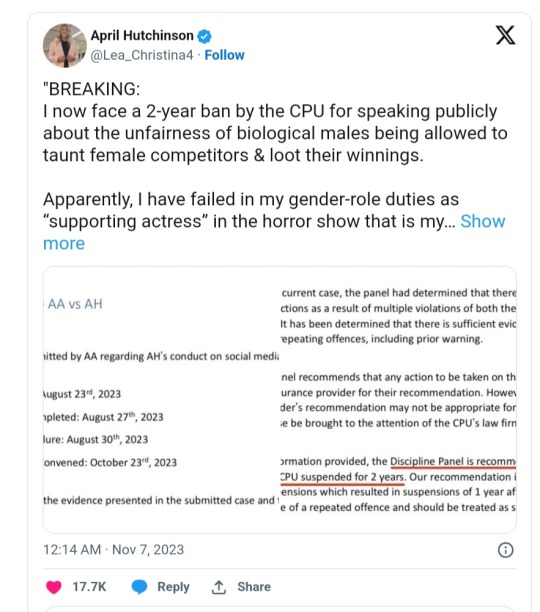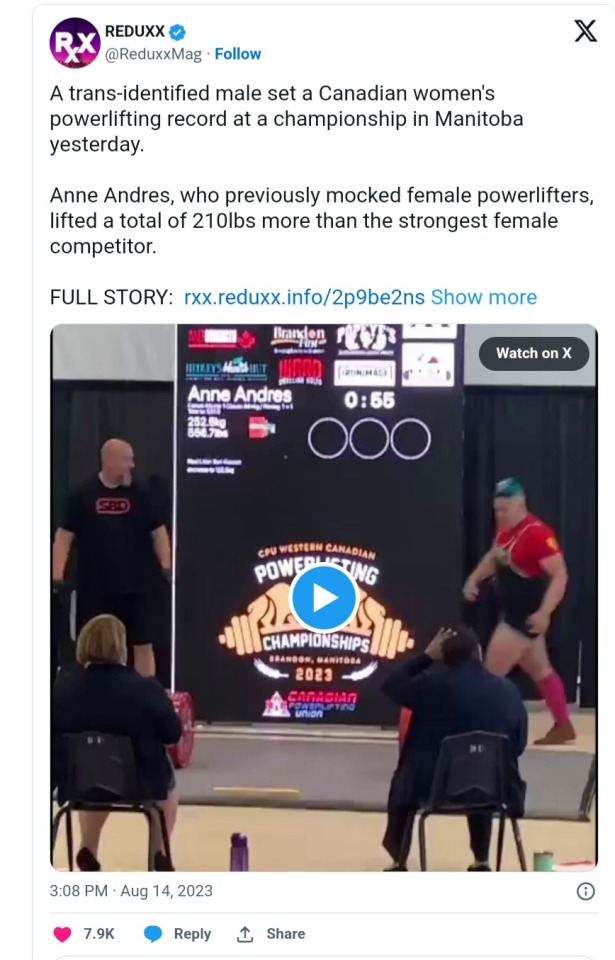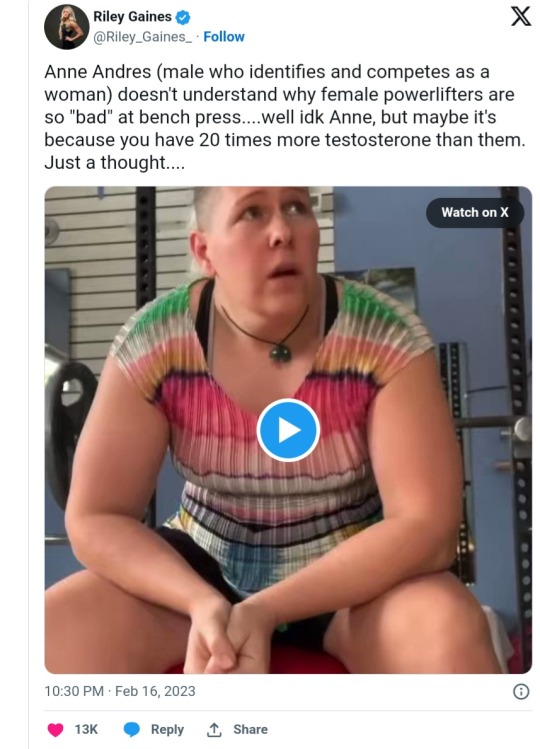#ipfs
Explore tagged Tumblr posts
Text
since this seems to be my topic of obsession for today...
turns out Bluesky internally uses content-based addressing and IPFS. I don't have a lot of use for it since it's a Twitter clone, and I've never got on very well with Twitter. Bluesky hides most of that from the user - it looks just like any old web app backed by a central server. i need to look into this more, Bluesky is taking inspiration from IPFS but it's using its own protocol, and it is doing some good things. I think its protocols could be used for something more Tumblr-like.
there's a protocol called PubSub which sounds like it does a lot of what I want, or rather gives you the low-level framework to broadcast info across a decentralised network. you could build a social network on top of that. IPFS uses it as one way of handling mutable data, like 'my website just updated'.
there's an absolute plethora of ideas, protocols, and tools for decentralised file sharing, decentralised messaging, decentralised social networks. this broad idea space is very much the hot new thing at the moment. some of them seem like they're growing. a lot of them have glossy websites with animations and stock photos of smiling people. it's hard to know in advance what's worth paying attention to. the whole field is dense with acronyms and rather abstruse concepts. which unfortunately means the current audience tends to be limited to tech nerds (c'est moi) and crypto cultists (ce n'est pas moi. merde!).
Briar is a protocol I find personally very appealing. it's security-oriented, designed to be crazy resilient, creating a mesh network through whatever protocols are available. you use it for E2E-encrypted messaging, but also you can use it for threaded discussions and blogs. right now it's only available for phones but they're working on a desktop version. the primary use case seems to be like "you're at a protest and the gov shuts off the internet", but it would be a very sexy place to put your blog. that said, I expect it would not be very fast at all.
the major encryptable, decentralised Discord/IRC alternative is Matrix. I broadly like the look of it, but we have the same problem of inertia getting people to switch from Discord, and there's still some jank I encountered when I tried it.
there's a lot of cryptocurrency in this whole area. (not surprising since the underlying tech of crypto is also hash-based, and there's ideological overlap between crypto and torrent people, because 'decentralised').
notably, there's a companion project to IPFS, a complicated scheme called FileCoin which is designed to encourage people to host data for a certain period in return for FileCoin tokens. you get FileCoins for consistently holding onto the data, and you lose a stake of FileCoins if you delete it prematurely. these FileCoins can then be used mainly to pay other people to host data for you: you pay FileCoins to a host, and pay them again to fetch your data(!). or you can trade them for other cryptocurrencies.
I'll acknowledge it doesn't seem as intrinsically environmentally corrosive as proof-of-work crypto, or even as simply 'the rich get richer' as proof-of-stake crypto. it's not filling up HDDs with random crap either. though it does sound like it requires quite a bit of CPU work to be done in all the hashing for the 'sealing' process.
I'm still not entirely convinced of the benefit this scheme brings. crypto stuff has a tendency to go belly-up very abruptly when speculative bubbles pop, so I wouldn't be super excited to rely on FileCoin for archiving some valuable bit of data. of course any offsite backup carries risk, e.g. Dropbox could go bankrupt one day. but I'm way less convinced of the benefits of something like FileCoin than IPFS. I guess it remains to be seen if this takes off.
25 notes
·
View notes
Text
🚀 Hivello & Neova: Powering the Future of Decentralized Storage! 🔗
Blockmate Ventures (TSX.V: MATE | OTCQB: MATEF | FSE: 8MH1) subsidiary Hivello has partnered with Neova to expand decentralized storage solutions, making it easier for users to participate in the Web3 economy.

🌍 What’s in store? ✅ Hivello to become a node distributor for Neova’s network ✅ Integration of Neova’s protocol into Hivello’s platform ✅ Testnet launch to validate Neova’s decentralized storage nodes ✅ Co-marketing to drive Web3 adoption
💡 “This partnership bridges the gap between cutting-edge DePIN networks and everyday users,” says Hivello Co-Founder & Chairman Domenic Carosa.
📊 Investor Outlook:
Stock Performance: The stock trades at $0.25. MATE investors eyeing potential upside as Hivello strengthens its Web3 position
Sector Growth: Decentralized storage & DePIN solutions gaining traction globally
Strategic Advantage: Hivello's simplified infrastructure boosts adoption, driving long-term value
📢 Read the full news release: https://stockhouse.com/news/press-releases/2025/02/05/blockmate-subsidiary-hivello-enters-strategic-partnership-with-neova-to-advance
🔔 Follow for more updates!
#Hivello#Neova#Web3#DecentralizedStorage#Blockchain#DePIN#Crypto#PassiveIncome#NodeHosting#IPFS#DeFi#DigitalAssets#CloudStorage#CryptoMining#HivelloNodes#NeovaStorage#BlockchainTechnology#CryptoInvesting#Web3Revolution#TechInnovation#StockMarket#InvestorNews
1 note
·
View note
Text


When you can make like 80 $LTC on a single post theory.
Steps:
Create a bunch of files that have value
Index them with SHA1-256 (a100d1234123412341234 filename.txt\rn\rna100d123497818213249871234 filename2.txt)
3. Paste result into google.co.uk search query
4. Favourite the search in your toolbar
5. Cntl-P, in order to print the document
6. Hover over the search query string in $GOOG after opening Microsoft SNIP (Snapshot Utility Application) and selecting 4 second delay then "New"
Upload to IMGUR and post on @Tumblr
0 notes
Text

$VOD Video on Demand - Web3 Video Streaming App
A Blockchain based Decentralized On Demand Video Streaming Platform ($VOD)
$VOD ( Video on Demand ) is a Web3 video streaming app, suitable for movies, videos, reviews and streaming. The app allows users to host their videos on the Blockchain and deal with them using $VOD token.
#video#VOD#videoondemand#vodcoin#cryptocurrency#CryptoNews#1000Xgems#1000x#BSC#BSCNEW#BinanceSmartChain#binance#blockchain#streaming#web3#nextgen#cryptocurrencies#crypto#cryptotrading#IPFS#decentralized#decentralization#monetization
0 notes
Text
youtube
Crypto: The World’s Greatest Scam.
Bitcoin to Blockchains, to NFTs, to Web 3.0... it's time to find out if it's really all the hype or just part of one of the greatest scams in human history.
#youtube#crypto#documentary#scam#nft#blockchain#ponzi scheme#james jani#web 3.0#history#currency#digital currency#mining#tokens#ico#ethereum#cryptokitties#moonpay#influencers#celebrities#ipfs#speculation
0 notes
Text
We're really only beginning to see what a tool like IPFS is capable of. If public repositories of data like Wikipedia and Internet Archive use IPFS they will become uncensorable. And that could in-turn have major effects on global access to knowledge, journalism, and free speech.
0 notes
Text
Have Your Content Get Stolen Through Lazy Minting NFTs

Are you a passionate Computer aided designer, digital artist, or a content creator? Every piece you create, consists of your time, sweat and wisdom. However, a nightmare for any artist or designer is to witness their intellectual property succumb to theft or forgery. Non-fungible tokens(NFTs) emerge as a promising solution for designers to register and authenticate their creations on the blockchain and showcase it to the world, yet there is a dark side to the process of minting NFTs.
Bots and scammers have found ways to steal original artworks and create NFTs without the creator's knowledge. This surge in spam, theft and other malicious activities gained momentum with the introduction of the lazy minting feature in 2021. Before you NFTs are even minted on the blockchain they’ve already been copied.
Here’s all you need to know about lazy minting NFTs and how your content is at the risk due to the feature. We also share tips on how you can safeguard your content from being stolen by minting 3D printable CAD files on Mintcad’s NFT platform.
Why Do You Need NFTs for Intellectual Property?
Firstly, let’s understand what an NFT is. In simple terms, NFTs or Non-Fungible Tokens, indicate a unique digital identifier attached to a content file whether it’s a 3D printable CAD file or other forms of digital content. It represents the authenticity and the genuine ownership of the underlying art. They allow digital property to form digital assets by registering their ownership on the blockchain. The process of converting a digital file into a non-fungible digital asset by assigning it a unique token on the blockchain is known as minting.
The unique feature about NFTs is their non-fungibility ie. you cannot exchange two NFTs for a single NFT as you can with fiat currency. These are non-interchangeable and irreplaceable. You can transfer the ownership if you sell your NFT or even rent it out to users for single use through custom smart contracts.
The digital asset’s metadata and underlying file is stored on a decentralized database such as IPFS which makes it nearly impossible to edit or modify the record unless the owner transfers or burns (deletes) it. No one can steal their work and claim it to be theirs ensuring CAD security with NFTs.
What is Lazy Minting of NFTs?
If you have read Mintcad’s article on how to mint your first NFT, you have a fair idea about minting NFTs. However, minting NFTs is a pricey procedure as creators must pay an upfront gas fee to mint their NFT on the blockchain. This creates an entry barrier for most of the creators who do not want to commit a good sum of money and risk before testing the waters.
Lazy minting or gasless minting emerged as a solution to this. Gasless minting does not mean you can mint NFTs without a gas fee. It simply implies that you assign a placeholder for your NFT to be minted later. Your NFT will not appear on the blockchain unless it is minted nor does its metadata and underlying file get stored on the IPFS.
Nevertheless, your NFT gets listed on the marketplace, but when a buyer places an order to buy the NFT, the NFT gets minted on the blockchain. Thus, the buyer bears the minting charges or the gas fees along with the cost of NFT.
How Lazy Minting poses a threat to digital content creators?
Lazy minting makes entering the NFT market a breeze for anyone who wants to list and sell their NFTs. It removes initial expenses allowing anyone to create NFTs for free, but if you haven’t minted your design yet, anyone can download the file from centralized databases and mint it before you can, making your NFT a copy.
This not only benefits the artists and designers but also the scammers who are successfully pulling off NFT scams.
Content theft is one of the major drawbacks of lazy minting NFTs. As the initial minting is free of cost, scammers steal content creators’ works and create an NFT for it, listing it on the marketplaces for sale. Sometimes the original creator does not even know that their work is being stolen and sold without their knowledge.
One of the top NFT marketplaces, OpenSea has even admitted, “Over 80% of the NFTs created with our "free minting tool" are 'plagiarized works, fake collections, and spam'.”
Lazy minting which was assumed to be a boon for the designers has allowed art thieves to exploit the entire system with virtually zero risk.
Real-world Examples of Lazy Minting NFT leading to content theft
Aja Trier, an artist faced a new and overwhelming challenge when she discovered that her popular Vincent Van Gogh-style paintings had been transformed into almost 86,000 NFTs (Non-Fungible Tokens). These digital tokens were being sold on OpenSea, without Aja's knowledge.
The issue arose because these NFTs were created using a method known as "lazy minting" on OpenSea. Lazy minting allows users to list NFTs for sale without completing the transaction on the blockchain until a buyer comes along. This feature became a problem because scammers exploited it to list numerous stolen items in the hope of finding buyers.
The method involved bots scraping art from online galleries or using keyword searches on Google Images to create collections with automatically generated descriptions. OpenSea, due to its popularity and less rigorous vetting system, became a hotspot for such activities.
Solution to Content Theft Caused by Lazy Minting
Though lazy minting looks lucrative on the surface allowing you to easily enter the NFT market it is putting your CAD assets at the risk of theft. At Mintcad we do not support lazy minting, we want to protect your design IPs with NFTs and believe the original creators should remain safe in this novel marketplace.
With lazy minting, the metadata of your CAD file gets stored only on a database like AWS, however when you mint your NFTs on Mintcad, we store your data on the decentralized database like IPFS. This ensures that the ownership of your NFT gets secured on the blockchain.
Along with this we are also working on an AI-based geometric recognition algorithm that recognizes the NFTs already minted and rejects the request on re-minting. This ensures that your CAD assets do not get stolen or forged.
We are working towards algorithm updates that restrict minting NFTs for content that violate any copyrights. We are taking every step to secure the digital assets of our content creators and enable them to leverage the benefits of NFTs.
If you are looking to secure the ownership of your 3D printable CAD files, mint NFTs for your CAD files on Mintcad, get them listed for sale or allow 3D printing enthusiast to print your file for a small fee that you as a creator earn.
NFT Minting on Mintcad
To mint your NFT, you must choose an appropriate NFT marketplace, Mintcad serves as a no-code solution to mint NFTs via smart specialized contracts.
Mintcad is one of the best NFT platforms to mint your 3D printable CAD files, list them for sale or allow your designs to be printed. You can learn more about how to mint your first 3d printable NFT on Mintcad.
This content is originally published on Mintcad's Website: Have Your Content Get Stolen Through Lazy Minting NFTs
0 notes
Text
Demystifying the Technicalities of Rendering Tokenized Generative Art

Art and technology have been gradually intertwining over the years, culminating in the emergence of tokenized generative art. It’s a fascinating convergence of creativity and computer science, involving the use of algorithms for art creation and blockchain technology for tokenization and provenance tracking. This article aims to break down the complex technicalities behind rendering tokenized generative art.
1. An Overview of Tokenized Generative Art
Tokenized generative art involves the creation of unique digital artworks through an algorithm or code, and then representing these pieces as distinct, non-fungible tokens (NFTs) on a blockchain, most commonly Ethereum. This novel approach allows artists to create a multitude of unique pieces, each represented by a distinct token with provable ownership and authenticity.
2. The Art of Generation: Programming and Libraries
Generative art is created through algorithms, essentially pieces of code that generate unique outputs based on certain parameters and randomness. Artists often use programming languages like Python or JavaScript and employ various libraries such as p5.js, Three.js, or TensorFlow.js to create visually diverse and intriguing pieces of artwork. The element of randomness and the use of mathematical constructs often leads to aesthetically pleasing patterns and structures. The algorithm might incorporate randomness in the form of color, shape, positioning, or a host of other parameters, all while keeping within certain aesthetic bounds defined by the artist.
3. Tokenization: Solidity and Smart Contracts
Once the artwork has been generated, each piece is tokenized, typically on the Ethereum blockchain. Tokenization involves creating a unique digital token for each artwork, which is carried out through the deployment of a smart contract. Solidity, Ethereum's programming language, is used to write this smart contract. These contracts usually adhere to the ERC-721 standard for NFTs, which defines a minimal interface allowing for the management, ownership, and transfer of unique tokens. The contract includes functions for minting (creating) new tokens, and each minted token is associated with a specific piece of artwork.
4. IPFS and Metadata
The connection between the token and its corresponding artwork is established through the token's metadata. This metadata typically includes details about the art piece and a URL pointing to the artwork file. To ensure the persistence of the artwork over time, the art files are usually stored on the InterPlanetary File System (IPFS), a decentralized storage system. The IPFS hash of the file is then stored in the token's metadata, creating an immutable link between the token and the artwork.
5. Rendering Tokenized Art: Interacting with the Blockchain
With the tokenization complete, the next step is to render or display the tokenized art. This involves developing a frontend application that can interact with the blockchain, read the metadata associated with each token, and display the artwork. Web3.js or Ethers.js are commonly used libraries to facilitate interaction with the Ethereum blockchain. These allow the application to connect to a user's Ethereum wallet, query the blockchain for the tokens owned by the user, and retrieve the token's metadata. This metadata is then used to fetch and display the actual artwork from its storage location.
6. The Marketplace: Buying, Selling, and Trading
Once the artwork has been tokenized and rendered, it can be bought, sold, or traded on any marketplace that supports the ERC-721 standard, such as OpenSea or Rarible. Each transaction is recorded on the Ethereum blockchain, providing a transparent and immutable history of ownership.
7. Generating New Tokens for Each Art Variant
One of the fascinating aspects of generative art lies in its ability to generate countless unique variants of a base artwork. Each variant is typically defined by certain variables, which might include aspects like color, shape, size, pattern, or any other parameter defined in the generation algorithm. This ability to create multiple unique pieces lends itself naturally to the concept of tokenization, where each distinct piece of artwork can be represented by a unique token. In the context of Ethereum and the ERC-721 standard, each unique piece of generative art (variant) can be associated with a distinct token. This involves extending the minting function within the smart contract. Here's a simple example using Solidity: pragma solidity ^0.5.0; import "@openzeppelin/contracts/token/ERC721/ERC721.sol"; contract MyNFT is ERC721 { uint256 public tokenCounter = 0; constructor() ERC721("MyNFT", "MNFT") public {} function mintArt(address to) public { uint256 newArtTokenId = tokenCounter; _mint(to, newArtTokenId); tokenCounter++; } } In the example above, tokenCounter is used to ensure each new piece of art gets a unique token ID. The mintArt function creates a new token with a unique ID and assigns it to the given address. This function can be called each time a new variant of the artwork is created, thus tokenizing each unique piece of generative art. It's important to note that the metadata for each token would also need to be unique to represent the unique artwork it is associated with. The metadata could include details about the variables that define the variant, along with the URL of the artwork file. Just as with the base artwork, each new variant could be stored on IPFS or another decentralized file storage system, and the URL of this stored file would be included in the metadata of the associated token. This allows each tokenized variant to be rendered individually, showcasing the unique features of each piece. In this way, not only can the original, base artwork be tokenized and rendered, but every single unique variant generated by the algorithm can be given its own representation on the blockchain, complete with its own provenance and ownership record. This significantly extends the potential for interaction, trading, and appreciation of the unique aspects of each variant within the broader generative art piece. In conclusion, while the technicalities of rendering tokenized generative art may initially appear complex, they essentially boil down to three main components: the generation of the art, the tokenization of the art, and the rendering of the tokenized art. By leveraging coding, blockchain, and decentralized storage, artists and developers are able to create, tokenize, and display unique pieces of digital artwork, pushing the boundaries of what's possible at the intersection of art and technology. Read the full article
#blockchain#decentralizedstorage#ERC-721Standard#Ethereum#generativeart#IPFS#Non-FungibleTokens#smartcontracts#Solidity#tokenization
0 notes
Text
re:
#I have none of the technical knowledge to assess this ideas merits#but it totally captures what i’d need from a network#…except the no deletes thing ig#that one might be rough.
so when i say 'no deletes' it's a little complicated. since this post is getting a little traction, let me explain some of the technical stuff in more detail.
the way content-based-addressing works is, instead of linking to a place on the internet (a specific server), you use something called a hash that's computed from the file itself.
for example, let's say you have a picture you want to share over IPFS. this picture, say.

If I have a copy of this picture, I can compute something called a hash function. The hash function is essentially a pseudo-random scrambling of the data, which is usually much smaller than the actual data. For example, the SHA-256 hash of luciano.webp here is, in hexadecimal,
31F7D77DE068047411F241209C3822F0AB6CB81DC508C6C9D83B64F38F99556A
This is only 256 bits, much smaller than the actual 106KB file.
The way hash functions work, it's very very very unlikely for two files to have the exact same hash. You can't 'work backwards' from the hash to the original picture, there's not enough data in the hash, but if you know what the hash is, and someone sends you something they claim is luciano.webp, you can very easily verify that it's (almost certainly) the picture you're looking for.
So the idea of all this is that you start with the hash and track down someone who has the original file and get it from them.
The way BitTorrent originally worked is that there's a computer called a 'tracker', which keeps track of everyone who has a copy of luciano.webp. You can say to the tracker 'hey I'm looking for luciano.webp, who has it?' and the tracker will send you a list, and then you can ask each of them for a copy. A torrent file is nothing more than a list of hashes and a list of trackers.
However, sometimes the tracker will go down. It's a single point of failure. But there's a way around this problem...
There's a very clever bit of tech invented for BitTorrent called a Distributed Hash Table (DHT). This makes it so that every computer on the network can be a tracker. The hash itself is used as an address to look up the computers keeping track of who has luciano.webp.
So when you join the network, you will also become a tracker for certain files. You don't know what those files are, since it's all based on hashes. What's great about this is that if a tracker goes down, another computer can sub in. The DHT gives a mechanism to determine who should be the trackers for each file.
IPFS, Interplanetary File System, is an attempt to use the same tech for websites. Basically, every time you download a file across IPFS, you hold onto a copy and let the trackers know that you have it, using the hash. If someone else comes looking for that file, you can serve it to them. When you download a file, you'll find the nearest computer that has a copy and get it from them.
One nice thing about this is that if someone else posts luciano.webp on their blog, it's already spread across the network, and so they can just download it from the nearest person.
Of course, you don't have unlimited storage space, so sooner or later you run out. At this point, you "flush" the oldest files that nobody has asked for recently - delete them from your computer, and tell the trackers you don't have them anymore.
So if it's not being downloaded, data gradually gets deleted from the computers on the IPFS. If you want data to stick around, you have to keep a computer running with instructions to never delete that file (this is called "pinning"), or pay someone else to do the same.
So when we say 'things can't be edited or deleted', it's complicated. Once you publish a file onto IPFS, it's hard to purge it from the network quickly. If you wanted to put up version 2 of a post, people can still look up version 1 using the hash of version 1. You can delete version 1 from your computer, and tell everyone the hash of version 2, but the version 1 will stick around. (There are ways around this in IPFS - see here, here - which let you direct people to the most up to date versions of a site/file.)
So to get rid of something after you've released it to IPFS, you have to have everyone get rid of it. But wait around long enough, and if nobody is pinning it, and nobody is still downloading it... that file will get deleted sooner or later.
Despite the very different underlying tech, functionally this is actually pretty similar to how Tumblr already works. Once something gets reblogged, it's out of your hands, you can't edit or delete the copy they have on their blog. (This is in contrast to a service like Twitter, where if you delete a Tweet, it also deletes the retweets. In programming jargon, Tumblr reblogs copy by value, while Twitter retweets copy by reference.)
On Tumblr, old posts tend to be very hard to find - people delete their blogs, or change URLs, and the search sucks. On IPFS on the other hand, old posts might be flushed off the network.
So it wouldn't be much different in practice.
Hypothetical Decentralised Social Media Protocol Stack
if we were to dream up the Next Social Media from first principles we face three problems. one is scaling hosting, the second is discovery/aggregation, the third is moderation.
hosting
hosting for millions of users is very very expensive. you have to have a network of datacentres around the world and mechanisms to sync the data between them. you probably use something like AWS, and they will charge you an eye-watering amount of money for it. since it's so expensive, there's no way to break even except by either charging users to access your service (which people generally hate to do) or selling ads, the ability to intrude on their attention to the highest bidder (which people also hate, and go out of their way to filter out). unless you have a lot of money to burn, this is a major barrier.
the traditional internet hosts everything on different servers, and you use addresses that point you to that server. the problem with this is that it responds poorly to sudden spikes in attention. if you self-host your blog, you can get DDOSed entirely by accident.
scaling hosting could theoretically be solved by a model like torrents or IPFS, in which every user becomes a 'server' for all the posts they download, and you look up files using hashes of the content. if a post gets popular, it also gets better seeded! an issue with that design is archival: there is no guarantee that stuff will stay on the network, so if nobody is downloading a post, it is likely to get flushed out by newer stuff. it's like link rot, but it happens automatically.
IPFS solves this by 'pinning': you order an IPFS node (e.g. your server) not to flush a certain file so it will always be available from at least one source. they've sadly mixed this up in cryptocurrency, with 'pinning services' which will take payment in crypto to pin your data. my distaste for a technology designed around red queen races aside, I don't know how pinning costs compare to regular hosting costs.
theoretically you could build a social network on a backbone of content-based addressing. it would come with some drawbacks (posts would be immutable, unless you use some indirection to a traditional address-based hosting) but i think you could make it work (a mix of location-based addressing for low-bandwidth stuff like text, and content-based addressing for inline media). in fact, IPFS has the ability to mix in a bit of address-based lookup into its content-based approach, used for hosting blogs and the like.
as for videos - well, BitTorrent is great for distributing video files. though I don't know how well that scales to something like Youtube. you'd need a lot of hard drive space to handle the amount of Youtube that people typically watch and continue seeding it.
aggregation/discovery
the next problem is aggregation/discovery. social media sites approach this problem in various ways. early social media sites like LiveJournal had a somewhat newsgroup-like approach, you'd join a 'community' and people would post stuff to that community. this got replaced by the subscription model of sites like Twitter and Tumblr, where every user is simultaneously an author and a curator, and you subscribe to someone to see what posts they want to share.
this in turn got replaced by neural network-driven algorithms which attempt to guess what you'll want to see and show you stuff that's popular with whatever it thinks your demographic is. that's gotta go, or at least not be an intrinsic part of the social network anymore.
it would be easy enough to replicate the 'subscribe to see someone's recommended stuff' model, you just need a protocol for pointing people at stuff. (getting analytics such as like/reblog counts would be more difficult!) it would probably look similar to RSS feeds: you upload a list of suitably formatted data, and programs which speak that protocol can download it.
the problem of discovery - ways to find strangers who are interested in the same stuff you are - is more tricky. if we're trying to design this as a fully decentralised, censorship-resistant network, we face the spam problem. any means you use to broadcast 'hi, i exist and i like to talk about this thing, come interact with me' can be subverted by spammers. either you restrict yourself entirely to spreading across a network of curated recommendations, or you have to have moderation.
moderation
moderation is one of the hardest problems of social networks as they currently exist. it's both a problem of spam (the posts that users want to see getting swamped by porn bots or whatever) and legality (they're obliged to remove child porn, beheading videos and the like). the usual solution is a combination of AI shit - does the robot think this looks like a naked person - and outsourcing it to poorly paid workers in (typically) African countries, whose job is to look at reports of the most traumatic shit humans can come up with all day and confirm whether it's bad or not.
for our purposes, the hypothetical decentralised network is a protocol to help computers find stuff, not a platform. we can't control how people use it, and if we're not hosting any of the bad shit, it's not on us. but spam moderation is a problem any time that people can insert content you did not request into your feed.
possibly this is where you could have something like Mastodon instances, with their own moderation rules, but crucially, which don't host the content they aggregate. so instead of having 'an account on an instance', you have a stable address on the network, and you submit it to various directories so people can find you. by keeping each one limited in scale, it makes moderation more feasible. this is basically Reddit's model: you have topic-based hubs which people can subscribe to, and submit stuff to.
the other moderation issue is that there is no mechanism in this design to protect from mass harassment. if someone put you on the K*w*f*rms List of Degenerate Trannies To Suicidebait, there'd be fuck all you can do except refuse to receive contact from strangers. though... that's kind of already true of the internet as it stands. nobody has solved this problem.
to sum up
primarily static sites 'hosted' partly or fully on IPFS and BitTorrent
a protocol for sharing content you want to promote, similar to RSS, that you can aggregate into a 'feed'
directories you can submit posts to which handle their own moderation
no ads, nobody makes money off this
honestly, the biggest problem with all this is mostly just... getting it going in the first place. because let's be real, who but tech nerds is going to use a system that requires you to understand fuckin IPFS? until it's already up and running, this idea's got about as much hope as getting people to sign each others' GPG keys. it would have to have the sharp edges sanded down, so it's as easy to get on the Hypothetical Decentralised Social Network Protocol Stack as it is to register an account on tumblr.
but running over it like this... I don't think it's actually impossible in principle. a lot of the technical hurdles have already been solved. and that's what I want the Next Place to look like.
245 notes
·
View notes
Text

SSQ-35-RKB-D Animated SVG
spiral #svg
token: https://objkt.com/asset/KT1Hybjvg5uefjdGNNJwhd5miFwuZahBxJYg/82
svg on ipfs: https://ipfs.io/ipfs/QmQQHZTs6poQTWGJRwHaswVfC8rbVoqzeiVMTrRPEihEq5
3 notes
·
View notes
Text
April Hutchinson may not be able to compete for two years for speaking the truth but she won my heart and respect.
By Genevieve Gluck. November 8, 2023
A female competitive powerlifter for Team Canada who spoke out after a trans-identified male athlete set a women’s national record at a championship in Manitoba has been informed that she is facing a two-year suspension from her sport as a result. April Hutchinson shared the news to X (formerly Twitter), where she has received an outpouring of support after she slammed the situation as a “horror show.”
“I now face a 2-year ban by the [Canadian Powerlifting Union] CPU for speaking publicly about the unfairness of biological males being allowed to taunt female competitors & loot their winnings,” Hutchinson wrote.
���Apparently, I have failed in my gender-role duties as ‘supporting actress’ in the horror show that is my sport right now. Naturally, the CPU deemed MY written (private) complaint of the male bullying to be ‘frivolous and vexatious.'”

Alongside her statement, Hutchinson shared images of the notice she had received, which reported that a discipline committee had convened on October 23 and had “determined that there is sufficient evidence for Major Infraction as a result of repeating offences, including prior warning.”
“Based on the information provided, the Discipline Panel is recommending that [April Hutchinson] have her membership to the CPU suspended for 2 years. We strongly feel this is a case of a repeated offence, and should be treated as such,” the notice read.
Hutchinson was reported to the CPU on August 23 by Anne Andres, a trans-identified male athlete who set a women’s national record at a championship in Brandon, Manitoba, on August 13. Hutchinson had publicly condemned his participation in the women’s category, and appeared on Piers Morgan Uncensored just days after the championship competition.
“I’ve been a powerlifter with the Canadian Powerlifting Union for about four years now. Over the last year, I have been fighting my federation to ban trans women — also known as men — from competing with women in powerlifting,” Hutchinson told host Rosanna Lockwood.
“They have ignored my pleas, as well as many other women who don’t agree with it. They’ve actually threatened to suspend me for speaking up about the matter,” she added. “The threats keep coming, and disciplinary action for speaking up has been ongoing over the last year.”
“The whole thing is disgusting. It’s disgraceful. It’s disheartening,” Hutchinson remarked. “I’ve been threatened with suspension. Two weeks ago, I received a letter from my Federation, stating that I cannot call Anne a biological male.” In response to news of Hutchinson’s potential ban, The Daily Mail reached out to Andres for comment. He responded by telling the journalist who contacted him that “the blood of LGBT people” was on her hands, and added, “Get straight f*cked.”

Andres, 40, currently holds multiple records in the female division, including the women’s deadlift and bench press, and has placed first in nine out of the eleven competitions he has participated in over the past four years.
At the Canadian Powerlifting Union’s (CPU) 2023 Western Canadian Championship, Andres participated in the Female Masters Unequipped category, and beat out Michelle Kymanick and SuJan Gil for the first place award — with a total powerlifting score that was over 200kg more than the top-performing female in the same class.
A “total” is the sum of the heaviest weight lifted for the squat, bench press, and deadlift. Andres’ total would have placed him amongst the top-performing male powerlifters in the entire championship had he participated in the men’s category.

The Western Canadian Championships was held under the umbrella of the Canadian Powerlifting Union (CPU), which announced a gender self-identification policy earlier this year. The policy, which garnered mass backlash from women’s rights advocates, explicitly allowed any males to participate in women’s competitions on the basis of self-declared “gender” alone.
In February, the CPU’s “Trans Inclusion Policy” was released, containing an explicit statement that the CPU supported allowing transgender powerlifters to participate in the sex category of their choosing based on a guidance from the Canadian Centre for Ethics in Sport (CCES).
“Based on this background and available evidence, the Expert Working Group felt that trans athletes should be able to participate in the gender with which they identify, regardless of whether or not they have undergone hormone therapy,” the document reads, deferring to the “inclusivity in sport” guidance from the CCES.
Just prior to the CPU’s announcement of a gender self-identification policy, Andres gained significant notoriety after sharing a video of himself appearing to mock female athletes, asking why female powerlifters were “so bad” at bench press.

The widespread outcry against males in women’s powerlifting events, prompted by news of Andres’ participation and taunting of female athletes, motivated the International Powerlifting Federation (IPF) to issue a policy change on August 21.
“For a transgender athlete to compete in the sport of powerlifting at any level, he/she must declare before competing that he/she is a transgender athlete. If an athlete fails to declare that he/she is a transgender and competes that violation leads to Disqualification of the result obtained in that Competition with all resulting Consequences, including forfeiture of any medals, points and prizes,” the IPF said in an updated policy document.
Increasing reports of male athletes identifying as female in order to compete in women’s events have attracted significant criticism. As previously reported by Reduxx, a Canadian powerlifting coach self-identified into the women’s category earlier this year and broke the Alberta women’s bench press record. Avi Silverberg was attempting to highlight the unfair advantage males have when competing in women’s athletics, in protest over the CPU’s recently implemented gender self-identification policies.
Not to show my age but the thought of men competing in women’s sports was funny when it was this guy

Say what you will about the 90's at least we had common sense about this issue
#Canada#April Hutchinson#[Canadian Powerlifting Union] CPU#Anne Andres is a man#But telling a journalist to get fucked is not bullying#If he competed as a man he would have been one of the top performing men but not the winner#Women’s sports is not a backup plan for men who can't win against other men#the CPU’s Trans Inclusion Policy#Canadian Centre for Ethics in Sport (CCES)#International Powerlifting Federation (IPF)
35 notes
·
View notes
Text

$VOD ( Video on Demand ) is a Web3 video streaming app, suitable for movies, videos, reviews and streaming. The app allows users to host their videos on the Blockchain and deal with them using $VOD token.
$VOD subscription-based video-on-demand (SVOD) model made popular by Netflix. This means that users can now create their own videos with their own subscription prices.
Benefits of $VOD decentralized streaming solutions
Security: $VOD Decentralized streaming solutions use encryption and decentralized networks to ensure that content is secure and cannot be tampered with. This helps to prevent unauthorized access and piracy of content.
Transparency: $VOD Decentralized streaming solutions provide transparency by allowing users to see how content is being distributed and how revenue is being shared among different parties.
Cost-effective: $VOD Decentralized streaming solutions can be more cost-effective than traditional streaming methods, as they eliminate the need for intermediaries and expensive infrastructure.
Minimal censorship: $VOD Decentralized streaming solutions provide content creators with the freedom to publish their content with minimal censorship or minimal interference from admin.
#video#VOD#videoondemand#vodcoin#cryptocurrency#CryptoNews#1000Xgems#1000x#BSC#BSCNEW#BinanceSmartChain#binance#blockchain#streaming#web3#nextgen#cryptocurrencies#crypto#cryptotrading#IPFS#decentralized#decentralization#monetization
0 notes
Text


New IPF bulbs for the Euro headlights to replace the PIAA bulbs. We will see how long they last.
Finally found the color yellow I wanted for the running/parking lights and they are high quality t10 LEDs. Currently using the PIAA ion yellow bulbs but they are halogen and don't last long, not even a year.

I was also looking to change to a 45-5000K bulb and these are freaking rad! They have a silicone ring that has a long lasting blue glow after the headlight is turned off and at dusk from the sun.
Was using 2500K solar yellow PIAA bulbs but they just are not bright enough for headlight use but work great for fogs.

For those of you wondering what light color or Kelvin to choose, this is a good reference using natural light. I personally stay away from anything over 5000K because it's too blue and kinda obnoxious. Between 4-5000K for headlights is perfect while 25-3500K is better for low visibility like fog and snow.

#subaru#jdm#custom lighting#IPF#upgrades#mods#headlights#led lights#piaa#custom#comparison#kelvin measurement#light color#color scale#the more you know#knowledge#modified cars#legacy gt#color temperature#scale#graph
3 notes
·
View notes
Photo

colour codes and font families for each NFT on Zora
0 notes
Text
youtube
Looking for your next series with an Autistic protagonist, a real murder mystery, and non-cheesy humour that was written by, created, and stars an actually Autistic person? I mean... you found it. 25 year-old Petra Preston, a newly diagnosed Autistic detective, insists on running her amateur PI business HER way. But when extroverted and headstrong Ivy comes along with a juicy murder case, Petra must learn the importance of collaboration while working through her insecurities and shame left over from being a social outcast in a world made for neurotypicals. Please go show the trailer some love so we can get money to make this thing!!!
#actually autistic#autism#neurodivergent#tv#web series#digital series#canadian series#canadian#ipf#cmf#autistic adult#autistic females#women with autism#autism in women#murder mystery#agatha christie#independent#Youtube
4 notes
·
View notes